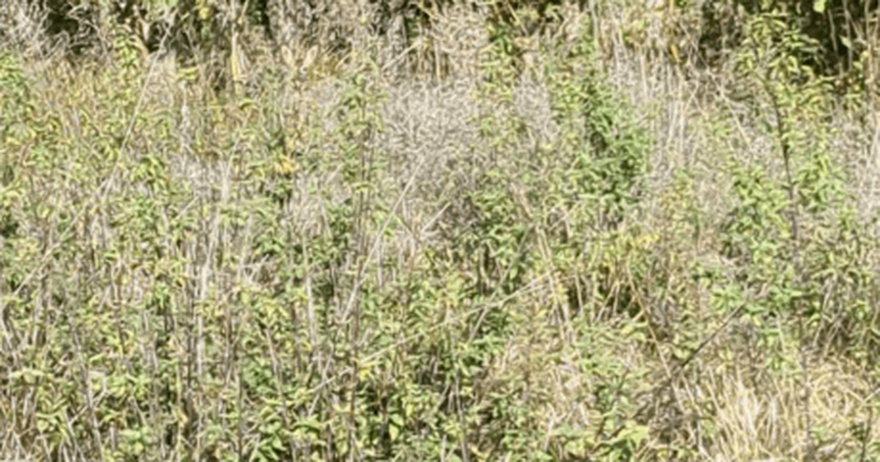The internet is filled with brain-teasing challenges, but there’s one that’s currently dominating social media—finding a well-camouflaged deer hidden within a dense forest scene. People are calling it the ultimate test of visual acuity, claiming that only those with “sniper-like vision” can spot the elusive animal among the trees. If you’re up for a challenge, this one’s for you! But be warned: it’s not as easy as it seems. Are you ready to test your skills and see if you can find the deer hidden within the picture? Let’s break down this intriguing visual puzzle and uncover what makes it so difficult.
Why This Puzzle is So Tricky
The Challenge of Camouflage and Pattern Recognition
Hidden object puzzles aren’t just about sharp eyesight; they test your ability to recognize shapes and patterns that blend seamlessly into the background. This particular puzzle features a dense forest scene, and somewhere among the trees and foliage, a deer is hiding. The tricky part? The deer has expertly blended with its surroundings, using its natural color to mask its presence. The image’s multiple layers of greenery, shadows, and branches make it easy to overlook the animal, even when it’s in plain sight.
The Psychology Behind Optical Illusions
Optical illusions like this one leverage the brain’s tendency to process visual information in patterns. When faced with a complex background, our brains prioritize larger, more prominent shapes. This often results in the smaller, subtler details—like a deer hiding among leaves—going unnoticed. The result? A fun yet challenging puzzle that makes you question your own eyes!
Common Mistakes People Make While Solving the Puzzle
1. Overlooking Small Details
The biggest mistake people make is focusing on the larger elements of the image. Our brains naturally gravitate toward bold shapes and colors, often causing us to miss subtle details like a pair of ears or an outline behind leaves. In puzzles like this, it’s crucial to shift your focus to the smaller, less obvious parts of the image.
2. Rushing Through the Image
The desire to solve the puzzle quickly can lead to mistakes. This particular challenge requires a slower, more methodical approach. The deer’s outline won’t jump out at you, so taking the time to carefully scan each part of the image can make a significant difference.
3. Failing to Adjust Focus
Another common error is fixating on one area of the image. Focusing only on the center of the image can cause you to miss potential hiding spots along the edges or in the corners. The key is to shift your gaze periodically to get a complete view of the picture.
4. Ignoring Subtle Shadows and Color Variations
Deer are natural camouflage experts, using shadows and varying shades to stay hidden. People often ignore how shadows blend with the animal’s body, making it hard to distinguish the deer from its surroundings. Paying attention to changes in shading can help you spot the elusive animal.
Step-by-Step Guide to Finding the Hidden Deer
Step 1: Start with a Wide View
Begin by taking a broad look at the entire image. This gives you an idea of the general layout and helps you familiarize yourself with the scene’s patterns. Don’t zoom in just yet—focus on understanding the distribution of leaves, branches, and potential hiding spots.
Step 2: Search for Irregular Patterns
After surveying the overall scene, start looking for irregular shapes or patterns. Deer often blend well, but parts of their body, like ears or antlers, can break the natural flow of the surrounding foliage. Look for anything that interrupts the uniformity of the background.
Step 3: Use Your Peripheral Vision
Sometimes, the best way to spot something is by not looking directly at it. By slightly diverting your focus, your peripheral vision can help you detect unusual shapes or patterns that you might have missed before. This technique can be especially helpful in finding hidden outlines like antlers or eyes.
Step 4: Analyze Color Differences
Camouflage works by blending in, but it’s rarely perfect. Scan the image for subtle differences in color or texture. The deer’s coat may be similar in color to the foliage, but slight mismatches in tone can give it away. Pay attention to areas where shades of brown or green seem a bit off.
Step 5: Zoom In and Inspect Thoroughly
If you’re still having trouble, try zooming in on the image to break it into smaller sections. Examine each section carefully, looking for telltale signs like a pair of eyes, a curved back, or antlers peeking through the leaves. Zooming in can help reveal hidden details that are hard to see from a wider perspective.
Found the Deer? Here’s Where It’s Hiding!
The deer is located in the lower center portion of the image, cleverly concealed among the tall grass and bushes. Its head is slightly visible, with the ears sticking out above the surrounding foliage. The animal’s natural coat blends remarkably well with the background, making it easy to miss at first glance. But once you spot it, you’ll wonder how you overlooked it in the first place!
Your Turn: Did You Spot the Hidden Deer?
Were you able to find the deer? If so, how long did it take you? Let us know about your experience! If you’re still struggling to spot it, don’t worry—this type of puzzle is designed to be challenging. The more you practice with puzzles like this, the better your visual acuity will become.
Conclusion: Sharpen Your Visual Skills with Hidden Object Puzzles
Hidden object puzzles like this one are more than just a fun challenge—they help enhance your cognitive skills, sharpen observation, and improve pattern recognition. Whether you’re a puzzle enthusiast or just someone looking for a quick mental exercise, these visual challenges offer a great way to keep your mind sharp.
So, if you enjoyed this puzzle, why not try more? Keep pushing your visual limits, and you might just discover that you have the “vision of a sniper” after all!
